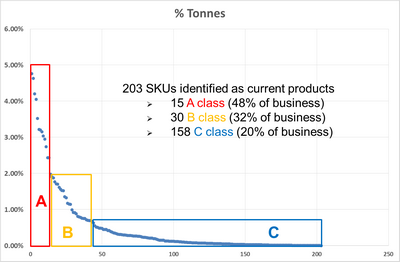Planning vs execution
This is an ongoing battle in many manufacturing organisations with either side blaming the other for causing long lead times, excessive work in progress, bursting finished goods stores, long changeover times, raw material shortages or missing packaging materials.
“Not in my factory” I hear you say. Well that is good news because either you do not have any planning vs production issues or you have decided to do something about it and stop the incredibly costly waste that happens when planning and execution are not aligned.
Planning is more than a click of a button
Where would you begin to bring planning, scheduling and execution together?
WBS Group Googled “production planning methods” and got “About 7,200,000 results”, picked a random website and found a list of 31 different planning software tools, 6 different planning spreadsheets, and 4 suggestions for T-Cards and wall boards. As far as technology goes, planning tools are readily available and it is mostly a case of picking the right one.
When we carry out manufacturing assessments or implement improvement projects in production facilities, we encounter the multitude of off-the-shelf planning tools, bespoke IT systems, home-grown spreadsheet and clipboard systems, and IT systems customised to perform some kind of planning and scheduling that they were not originally designed to do. These systems are often used by stressed out tired looking planners, which is a clear indication that something is not working as intended.
Systems, however, are just a small part of the equation. Understanding your business is where it all begins and where things start to get complicated.
Quality in – quality out
Planning is a dynamic activity that needs constant attention because the world is forever changing. Customer numbers vary, demands vary, suppliers can be difficult to manage, forecasts change, SKU numbers go up and down etc. etc.
To produce a manufacturing plan and schedule that is achievable for the shop floor and which satisfies customer demand a number of factors must be taken into consideration:
- Sales forecast
- Sales history
- Up-to-date SKU categorisation (Fast, medium, and slow moving)
- Production capacity
- Production downtime (e.g. changeovers and scheduled maintenance)
- Production waste
- Storage capacity (raw materials and finished goods)
- Stock levels and days of cover (raw materials and finished goods)
- Supplier lead times
- Lead times to customer (including transport time where applicable)
- Seasonality, promotions, and other periodic changes in demand
- New product introduction and prototyping
Without detailed knowledge of this data, planners will have an uphill struggle to meet customer demand and it is vital that departments such as Production, Sales and Marketing, Quality, New Product Development, Procurement, Transport, and Warehouse provide reliable data and feedback to the Planning Department.
Be brave and simplify
It is a very human trait to accept the way things are. So much so, that we find it unnerving to make changes to something we have got used to, despite the fact that it may be a constant irritant. And as planning involves more than just the planner or the Planning Department it can be even harder to rock the boat and change planning methods and processes.
Malfunctioning spreadsheets with 50+ tabs, poor integration between new and legacy systems, poor communication between people, unclear responsibilities, informal and unwritten processes which have slowly evolved and been inadequately handed over from employee to employee are some of the typical planning problems we encounter.
When planning methods are not understood, too complicated, or too bureaucratic they immediately become inflexible and a hindrance to the business and cause exasperation on the shop floor. Very often radical change in thinking, attitude, and systems is required to focus on some basic requirements for successful planning and scheduling.
The ABC of planning

Fig. 1 Example of ABC classification of SKUs
Understanding SKU behaviour is absolutely critical to dynamic planning and flexible execution. By categorising all SKUs by how well they sell, you move away from a one size fits all type of planning to one which will give the shop floor instructions to produce just what is needed. The fast movers (runners) would be your A category, which you would level load and make to stock. The regular, but less frequent SKUs (repeaters) would become your B category, which you could manage through Kanbans. Finally, the slowest moving SKUs (strangers) are your C category, which you would typically make to order on a longer lead time.
With this SKU knowledge to hand you can now design and utilise your production lines in a highly efficient and productive way. Scheduling becomes easier and changeovers can be performed in the most efficient order. Procurement of packaging and raw materials becomes more predictable and wastage goes down. If your finished goods warehouse was full of the wrong products, you will see inventory reduce to just what is needed to cover demand. In a recent project WBS Group Consultants identified a £150,000 p.a. saving through planned elimination of over production.
Like so many other techniques in lean manufacturing, ABC-planning must be sustained to remain effective. SKUs typically go through a life cycle. They start as strangers with no sales history, they become more popular and turn into repeaters and take off into big selling runners. Then after a while they mature, the market loses interest and runners become repeaters and end up as strangers. By refreshing the SKU data at regular intervals you will ensure that your planning and production are in line with customer demand.
This life cycle brings with it important business decisions such as, lead time commitment, pricing, and SKU rationalisation. How long do you keep offering a product that is no longer profitable to make? Having a D category (museum) can be very costly.
To find out how WBS Group Supply Chain Consultants can assist you in optimising your planning and scheduling contact us for an initial FREE no obligation consultation.
You can also read more about our Manufacturing and Operations Assessment here.